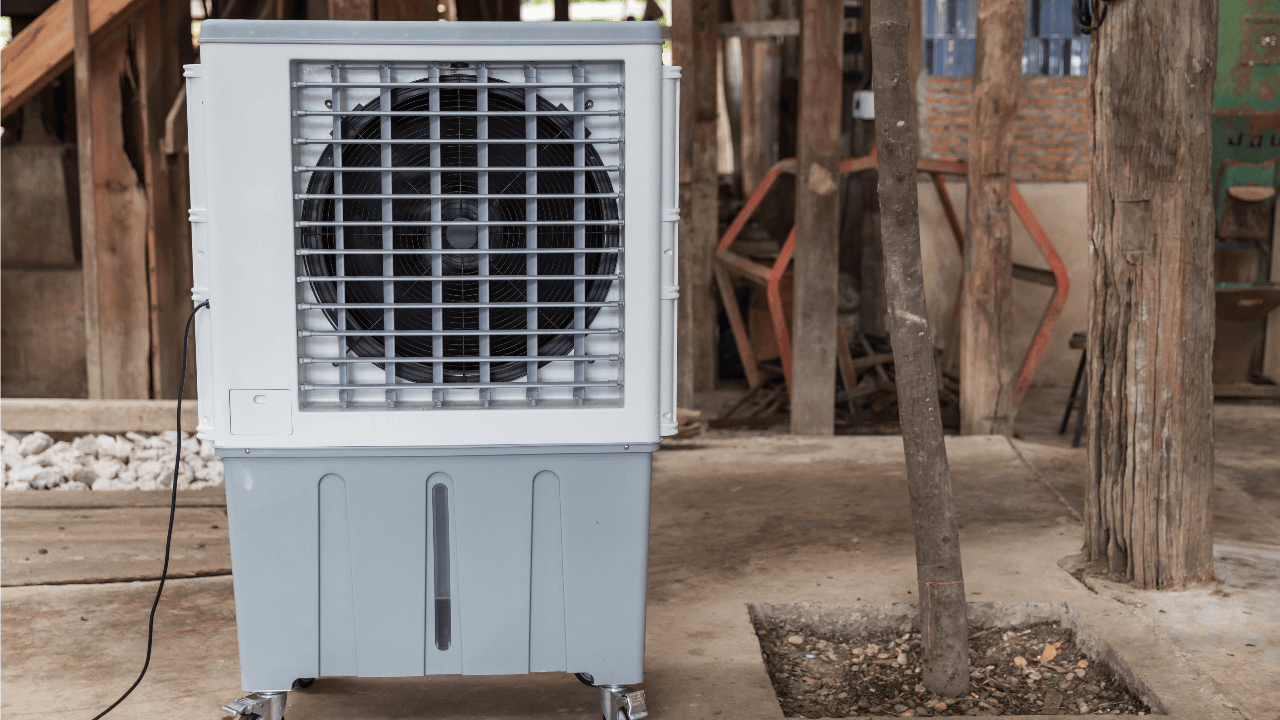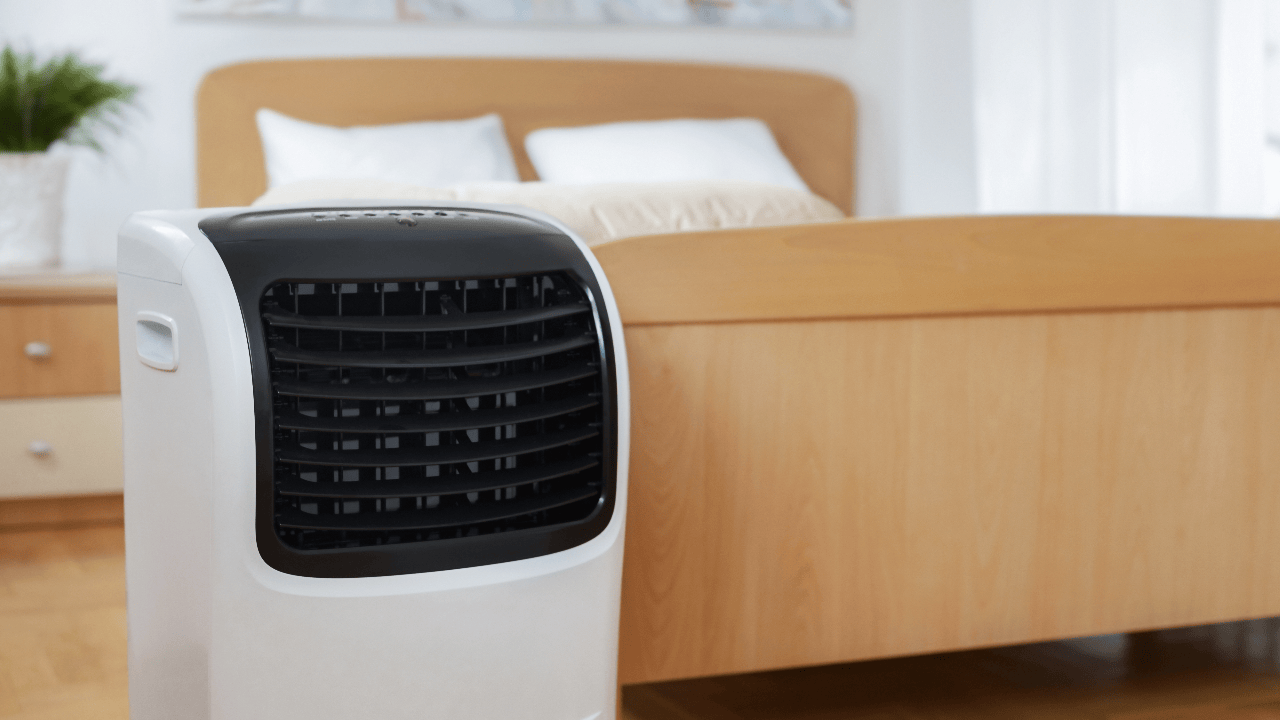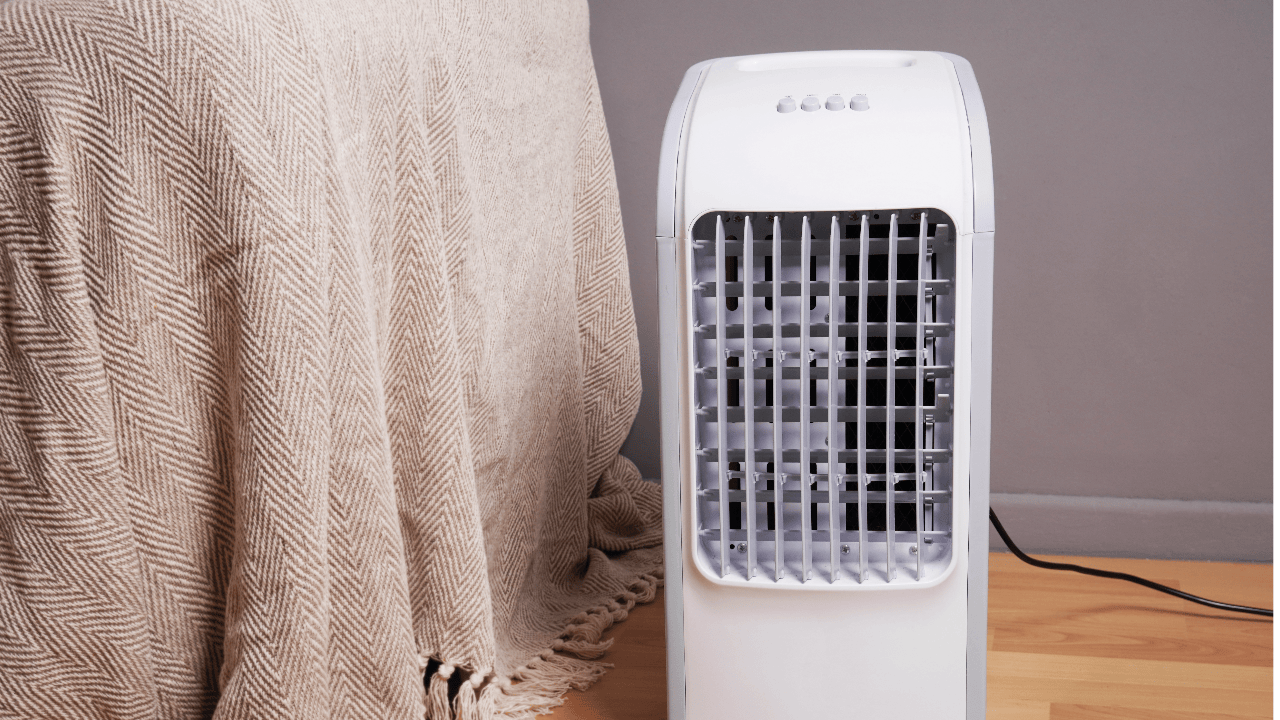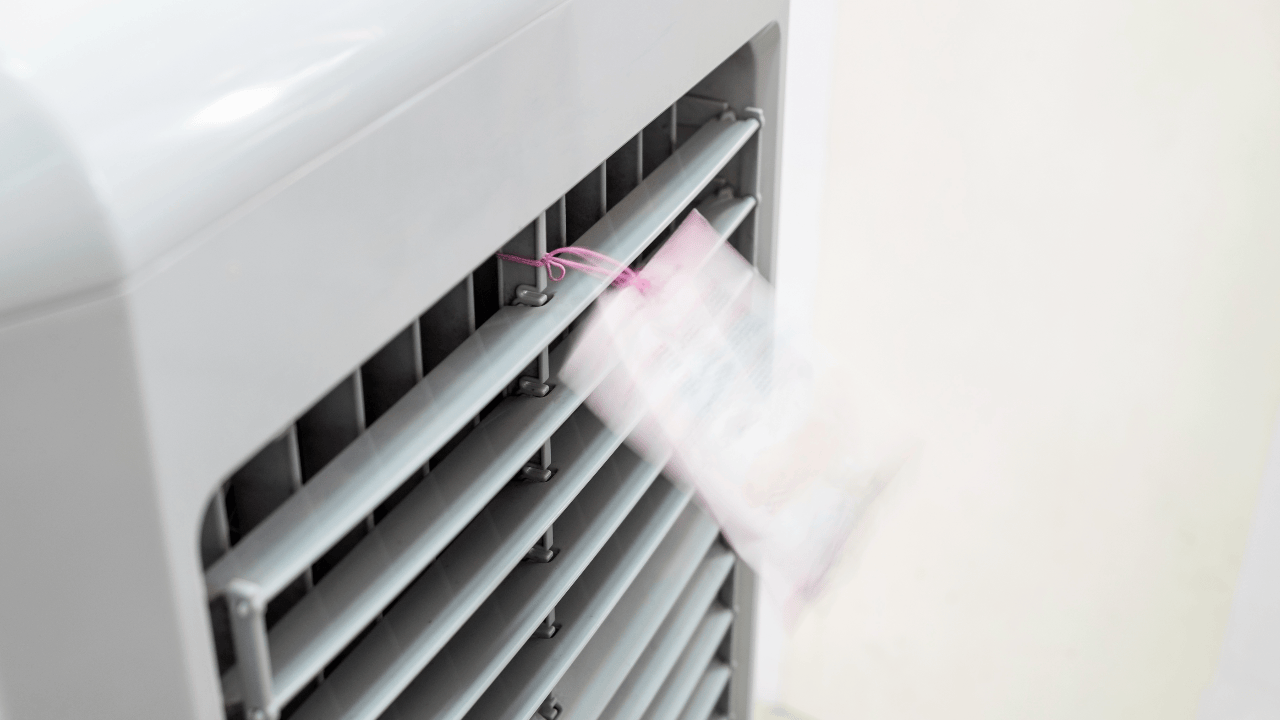
In the quest for more sustainable living, evaporative coolers have emerged as a frontrunner in the world of eco-friendly cooling solutions. These devices, often referred to as swamp coolers, have gained significant popularity, especially in regions like the Western United States, where the climate is conducive to their operation. But what exactly are evaporative coolers, and why are they becoming a go-to choice for cooling?
What are Evaporative Coolers?
Evaporative coolers, fundamentally different from traditional air conditioners, use the natural process of water evaporation to cool air. A fan draws in hot air, which then passes over water-saturated pads. As the water evaporates, it absorbs heat, thereby cooling and humidifying the air. This method is not only energy-efficient but also adds a refreshing touch of moisture to the air, making it particularly beneficial in dry climates.
The Rising Popularity of Eco-Friendly Cooling Solutions
The appeal of evaporative coolers extends beyond just their cooling capabilities. In an era where energy conservation and environmental impact are paramount, these coolers stand out for their low electricity consumption and absence of harmful refrigerants. This makes them a cost-effective and environmentally responsible choice. Furthermore, their simplicity in design translates to easier maintenance and lower operational costs compared to conventional air conditioning systems.
As we delve deeper into the mechanics, benefits, and usage of evaporative coolers, it becomes clear why they are considered the 'cool' choice in more ways than one. They represent a blend of comfort, sustainability, and efficiency, aligning well with the increasing global emphasis on eco-friendly living and energy savings.
Join our newsletter
Stay on top of the latest in landscaping and lawn care with one valuable tip right in your inbox every Saturday morning.
The Science Behind Evaporative Cooling
Evaporative cooling, a cornerstone of evaporative coolers, stands distinct from traditional air conditioning in several key aspects. Understanding these differences is crucial in appreciating the unique benefits and operational efficiency of evaporative cooling systems.
How Evaporative Cooling Differs from Traditional Air Conditioning
The primary distinction between evaporative cooling and traditional air conditioning lies in their cooling mechanisms. Traditional air conditioners, often referred to as mechanical air conditioners, rely on refrigerants and compressors to cool the air. These systems extract heat from the indoor air and release it outside, simultaneously dehumidifying the air as it cools.
In contrast, evaporative air coolers utilize a natural cooling process. They consist of a fan, a water pump, and evaporative media (wet pads). Hot, dry outside air is drawn into the cooler, where it passes over water-saturated pads. The water in these pads evaporates, absorbing heat from the air, and thus cooling it. This cooled air is then circulated throughout the space.
The Role of Humidity and Air Temperature in Evaporative Cooling
The efficiency of evaporative cooling is significantly influenced by two environmental factors: humidity and air temperature.
- Humidity: Evaporative coolers are most effective in regions with low humidity. The reason for this is simple: dry air has a higher capacity to absorb moisture. In humid conditions, the air is already saturated with moisture, which reduces the rate of evaporation and, consequently, the cooling effect.
- Air Temperature: These coolers work best in hot climates. The higher the ambient temperature, the greater the potential for cooling, as warmer air can hold more moisture. Therefore, in hot, dry environments, evaporative coolers can significantly reduce air temperatures, providing comfortable conditions.
In essence, evaporative cooling offers an eco-friendly, energy-efficient alternative to traditional air conditioning, particularly suited for areas with hot, dry climates. By leveraging the natural process of evaporation, these coolers provide a cooling solution that is both effective and environmentally conscious.
Understanding Swamp Coolers
Swamp coolers, more formally known as evaporative coolers, are fascinating devices that harness the natural process of evaporation to cool air. In this section, we'll explore the basic mechanics of a swamp cooler and delve into the origin of its intriguing name.
The Basic Mechanics of a Swamp Cooler
At its core, a swamp cooler consists of a few key components: a fan, water-soaked pads, a water reservoir, and a pump. Here's how these components work together:
- Water Pump: This circulates water from the reservoir to the cooling pads.
- Cooling Pads: Typically made of wood shavings or synthetic fiber, these pads absorb water from the pump.
- Fan: It draws warm outside air through the wet cooling pads. As the air passes through these pads, water evaporates, absorbing heat from the air and thus cooling it down.
- Cooled Air Distribution: The now-cooled air is then blown into the house or space, reducing the overall temperature.

Why They are Called "Swamp Coolers"
The term "swamp cooler" might sound misleading, as these devices are most efficient in dry, not swampy, environments. The name is believed to stem from the cooler's output of moist air, reminiscent of a swamp's humid environment. Ironically, in actual swamps or other high-humidity areas, these coolers would be less effective due to the already moisture-laden air.
Swamp coolers offer a simple yet ingenious way of cooling spaces, particularly suitable for dry and hot regions. Their operation, deeply rooted in the basic principles of evaporation, provides an eco-friendly and cost-effective alternative to conventional air conditioning systems.
The Advantages of Evaporative Coolers Over Traditional Air Conditioners
Evaporative coolers, often called swamp coolers, present several key advantages over traditional air conditioners, making them a compelling choice for environmentally conscious and cost-aware consumers, especially in suitable climates like the dry areas of the Western United States.
Energy Efficiency and Cost-Effectiveness
- Lower Energy Consumption: Evaporative coolers use significantly less electricity compared to traditional air conditioners. This is because they rely on the natural process of evaporation rather than energy-intensive compressors, making them more energy-efficient and cost-effective.
- Reduced Operating Costs: The initial installation and ongoing maintenance costs of swamp coolers are typically lower than those of mechanical air conditioners. This makes them a budget-friendly option for cooling, especially during the peak cooling season.
- Optimal for Dry Climates: In dry climates, where hot air is prevalent, evaporative coolers provide effective cooling. Their efficiency in these conditions makes them especially suited for areas like the Western United States.
Environmental Benefits
- Eco-Friendly Operation: Unlike traditional air conditioning systems that use refrigerants, evaporative coolers utilize water, making them more environmentally friendly. They do not contribute to greenhouse gas emissions, aiding in reducing your carbon footprint.
- Air Quality Improvement: Swamp coolers continuously circulate fresh outdoor air, unlike air conditioners that recirculate the same indoor air. This process helps to filter out pollutants and allergens, improving indoor air quality.
- Adding Humidity to Dry Air: Evaporative coolers add moisture to the air, which can be beneficial in arid environments. This added humidity makes the air feel more comfortable compared to the sometimes overly dry conditions created by traditional air conditioners.
In summary, evaporative coolers offer a sustainable, cost-effective, and efficient alternative to traditional air conditioning, especially in regions with the right climate. Their lower energy usage, environmental friendliness, and ability to improve indoor air quality make them an attractive option for cooling needs.
How to Choose the Right Evaporative Cooler
Selecting the appropriate evaporative cooler, often known as a swamp cooler, involves considering various factors to ensure optimal performance and efficiency. Here, we outline key considerations and the different types available to guide you in making an informed decision.
Factors to Consider
- Size and Cooling Capacity: It's crucial to choose a cooler that matches the size of the space you want to cool. The cooling capacity of evaporative coolers is measured in CFM (Cubic Feet per Minute). A general rule of thumb is to multiply the square footage of the area by the ceiling height, then divide by two to get the required CFM.
- Climate Suitability: Evaporative coolers are most effective in dry, arid climates. They work by adding moisture to the air, so in areas with high humidity, their efficiency significantly decreases.
- Space and Installation: Consider the type of space and the installation process. Portable evaporative coolers are suitable for small spaces or where temporary cooling is needed. For larger or permanent installations, window-mounted or central units are more appropriate.

Different Types of Evaporative Coolers
- Portable Evaporative Coolers: Ideal for small rooms, personal spaces, or areas where a permanent installation isn't feasible.
- Window Mounted Coolers: These are installed in a window and are suitable for cooling single rooms or small homes.
- Central Evaporative Coolers: Also known as whole-house evaporative coolers, these are connected to the air distribution system to cool an entire home.
- Industrial/Commercial Evaporative Coolers: Designed for large spaces, these coolers have higher CFM ratings and are built for durability and continuous operation.
Choosing the right evaporative cooler involves understanding your space, local climate, and the specific cooling needs. By considering these factors, you can ensure that your evaporative cooler will provide effective and efficient cooling performance.
Installation and Maintenance of Evaporative Coolers
Proper installation and regular maintenance are key to maximizing the efficiency and longevity of your evaporative cooler, often referred to as a swamp cooler. Follow this step-by-step guide to ensure your cooler is set up correctly and learn maintenance tips to keep it running smoothly.
Step-by-Step Guide to Installing a Swamp Cooler
- Choose the Right Location: For window-mounted coolers, ensure it's in a window that can support its weight and where air can flow freely. For central units, a rooftop or an external wall is ideal.
- Secure the Cooler: Make sure the cooler is level and securely mounted to avoid any water leakage or operational issues.
- Connect Water Supply: Attach the cooler to a water source. This can be done via a direct connection to an outdoor water line or by manually filling the cooler's reservoir.
- Electrical Connections: Ensure that the electrical connections comply with local codes and are safely installed. It's often best to hire a professional electrician for this step.
- Airflow Management: Proper airflow is crucial. Ensure that there are slightly open windows or vents in areas being cooled to allow for effective air circulation.
Join our newsletter
Stay ahead of the curve in all things outdoor.
Get the inside scoop on the latest landscaping, lawn care, and fencing trends with 1 actionable tip every Saturday morning.
Maintenance Tips for Optimal Performance
- Regularly Replace or Clean Pads: Cooling pads should be cleaned or replaced regularly to ensure efficient cooling and to prevent mold growth.
- Check Water Levels and Quality: Maintain the correct water level in the reservoir and ensure the water is clean to prevent mineral buildup.
- Inspect and Clean Components: Regularly inspect the pump, fan, and motor for any signs of wear or damage. Keep them clean from dust and debris.
- Winterize Your Cooler: In areas where the cooler will not be used year-round, drain the water, disconnect the water supply, and cover the unit during the off-season to protect it from the elements.
By following these installation and maintenance guidelines, you can ensure that your evaporative cooler operates efficiently, providing effective cooling while minimizing repair and replacement costs
Maximizing the Efficiency of Your Evaporative Cooler
To get the most out of your evaporative cooler, commonly known as a swamp cooler, it's essential to follow certain best practices. These tips will not only enhance the cooler's effectiveness but also contribute to its longevity.
Best Practices for Using Evaporative Coolers
- Optimal Placement: Ensure your evaporative cooler is placed in a location where it can draw in the hottest and driest air, typically an outside-facing window or an elevated position.
- Regular Water Supply Check: Keep the water level in the reservoir consistent. A steady water supply is crucial for the efficient functioning of the evaporative pads.
- Adequate Ventilation: Unlike traditional air conditioners, evaporative coolers need a constant flow of fresh air to operate effectively. Ensure your space is well-ventilated, with doors or windows slightly open to allow for air circulation.

Tips to Enhance Cooling Effectiveness
- Pre-Cooling: In extremely hot conditions, pre-cool the pads by running the water pump before activating the fan. This ensures immediate cool air output once the fan is on.
- Proper Maintenance: Regularly clean and replace the cooling pads, clear the water tank of sediment, and ensure the fan and motor are in good working condition.
- Use in Ideal Climates: Evaporative coolers are most effective in dry climates. In areas with high humidity, their cooling efficiency diminishes.
- Add Ice or Cold Water: For an extra cooling effect, some models allow you to add ice or cold water to the reservoir, enhancing the cooling performance during peak heat periods.
By implementing these practices, you can significantly boost the efficiency and cooling power of your swamp cooler, making it a highly effective and eco-friendly alternative to traditional air conditioning, especially in suitable climates like the dry regions of the Western United States.
Common Misconceptions About Evaporative Cooling
Evaporative cooling technology, especially in swamp coolers, is often shrouded in misconceptions. Let's debunk some common myths and uncover the realities of evaporative cooling in different climates.
Debunking Myths About Swamp Coolers
- Myth: Only Effective in Dry Climates: While they excel in dry environments, modern evaporative coolers are increasingly effective in varied climates, thanks to technological advancements.
- Myth: Limited Cooling Capacity: Contrary to this belief, swamp coolers can significantly lower temperatures, especially in the right conditions, offering a comfortable and cool environment.
Realities in Different Climates
- Dry Climates: Here, swamp coolers are highly efficient, adding necessary humidity while cooling.
- Humid Climates: In more humid areas, their efficiency may decrease, but they still provide a level of cooling and comfort.
Understanding these facts helps in choosing the right cooling solution for your specific climate and needs, ensuring satisfaction and effectiveness.
Future Trends in Evaporative Cooling Technology
The field of evaporative cooling is on the brink of exciting advancements, paving the way for more eco-friendly and efficient cooling solutions.
Innovations and Advancements in the Field
- Enhanced Efficiency: Upcoming innovations focus on maximizing cooling efficiency while minimizing energy usage.
- Smart Technology Integration: The incorporation of smart controls and IoT connectivity for automated, optimized performance.
Eco-Friendly Cooling's Future
- Wider Climate Adaptability: Future designs aim to make evaporative coolers effective in a broader range of climates.
- Renewable Energy Synergy: Expect to see a rise in evaporative coolers powered by solar or other renewable energy sources, bolstering their eco-friendly credentials.
These trends indicate a promising future for evaporative cooling, aligning with global sustainability goals and consumer demand for greener technologies.

Evaporative Cooling FAQs
In this section, we address some frequently asked questions about evaporative coolers, commonly known as swamp coolers, to help you better understand their capabilities and suitability for your needs.
Is a Swamp Cooler as Good as AC?
Swamp coolers and traditional ACs (air conditioners) serve the same purpose but operate differently. In dry climates, a swamp cooler can be as effective as an AC, providing cool air while being more energy-efficient and cost-effective. However, their performance can diminish in humid conditions, unlike ACs that work well in various climates.
What Does a Swamp Cooler Do?
A swamp cooler, or an evaporative air cooler, works by drawing hot air through wet cooling pads. As the air passes through these pads, water evaporates, absorbing heat and thereby cooling the air. This process also adds moisture to the air, making it a great option for dry climates.
Do Swamp Coolers Work in 100 Degree Weather?
Yes, swamp coolers can work effectively in 100-degree weather, particularly in low-humidity environments. They are designed to provide cooler air in hot conditions, making them suitable for high-temperature regions with dry air.
How Cold Can a Swamp Cooler Get a Room?
The cooling capacity of a swamp cooler depends on the external temperature and humidity levels. In ideal conditions (hot and dry), they can reduce indoor temperatures by 15 to 20 degrees Fahrenheit. However, in humid conditions, the cooling effect will be less pronounced.
Why Evaporative Coolers are the Cool Choice
As we've explored in "Evaporative Coolers: Efficient Cooling Explained," evaporative coolers, often known as swamp coolers, stand out as a highly effective, eco-friendly, and cost-efficient alternative to traditional air conditioning systems. Here's a recap of why choosing an evaporative cooler is a wise decision:
- Energy Efficiency and Cost-Effectiveness: Evaporative coolers consume significantly less electricity than conventional air conditioners, leading to lower energy bills and maintenance costs.
- Environmental Benefits: These coolers use a natural cooling process, adding moisture to the air and avoiding harmful refrigerants, thus reducing your carbon footprint.
- Suitability for Dry Climates: In areas with low humidity, evaporative coolers excel in providing comfortable, cool air, making them ideal for regions like the Western United States.
- Simple Installation and Maintenance: They are easier to install and maintain compared to traditional AC systems, adding to their appeal.
- Innovations in Technology: With advancements in technology, evaporative coolers are becoming more versatile, efficient, and smarter, making them suitable for a wider range of climates and user needs.
Encouraging sustainable cooling practices is more crucial than ever in our journey towards environmental stewardship. Evaporative coolers represent a step forward in this journey, offering a perfect blend of efficiency, eco-friendliness, and practicality. As we look to the future, the role of evaporative cooling in our homes and businesses is set to become increasingly important, making it a cool choice in more ways than one.
Join our newsletter
Stay ahead of the curve in all things outdoor.
Get the inside scoop on the latest landscaping, lawn care, and fencing trends with 1 actionable tip every Saturday morning.